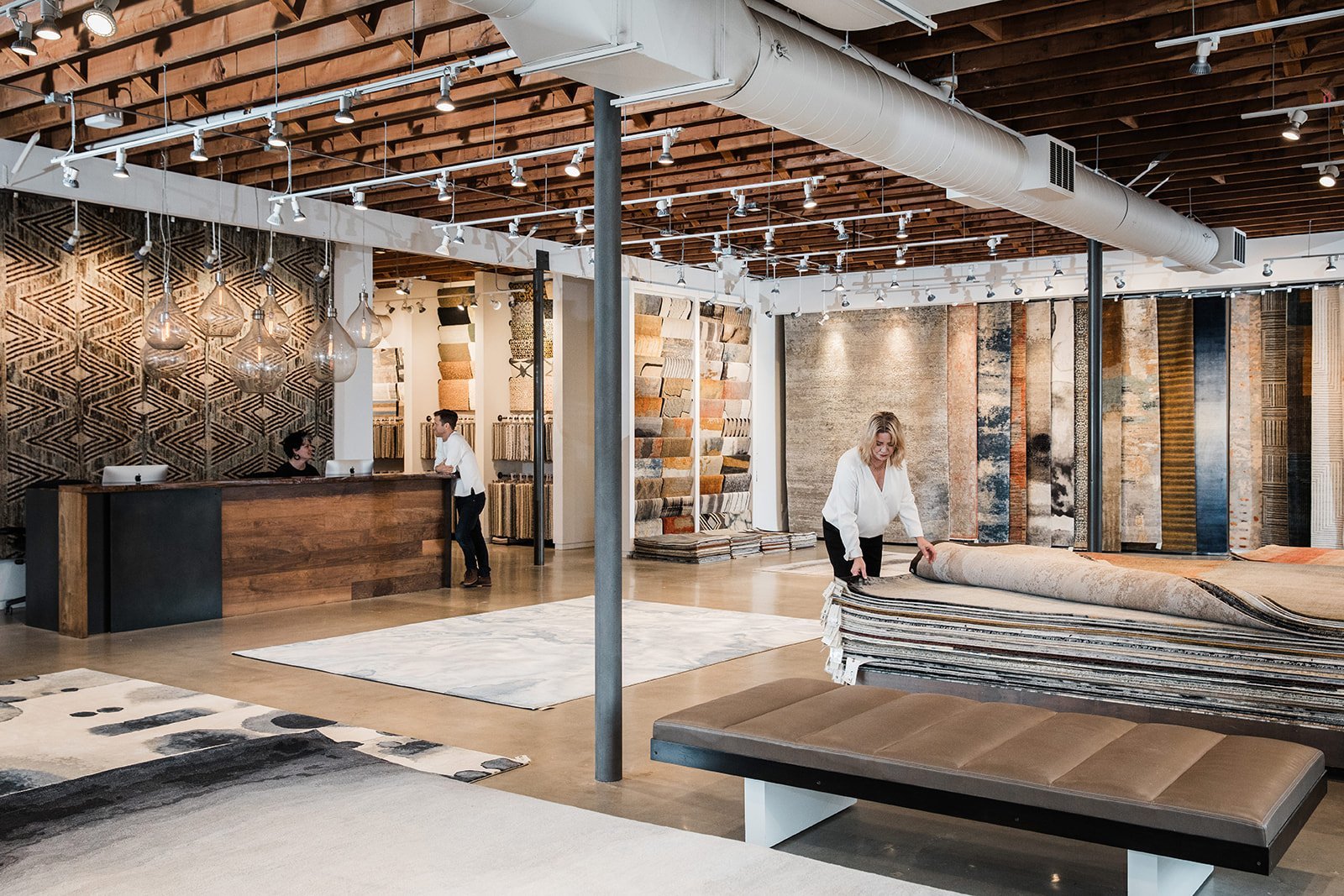Weaving Stories: An Interview with Rug Expert Driscoll Robbins
We recently sat down with rug expert, Driscoll Robbins, to explore the surprisingly adventurous world of rugs. With deep family ties to the international antique rug trade, Driscoll’s life and career in the rug business has been anything but ordinary. Our conversation spans tales of traveling to exotic destinations in search of rugs, to running a thriving business in Seattle, and embracing innovative techniques in modern rug-making.
TSD: I was fascinated when I first learned about your childhood, traveling abroad and growing up in a family so deeply involved in the rug business. Can you share some of your memories of this experience?
DR: Growing up, our family’s life revolved around rugs and travel. We lived in a van for a few years during two extended trips where we traveled all throughout Asia. My earliest memories are of being dragged around Asia as a kid, sitting in rug stores while my parents haggled over prices for hours. It was partly about buying rugs and partly an incredible adventure. At 10 years old, I was more focused on the excitement of the journey than on the rugs themselves.
It wasn’t until college, when I started thinking more about my future, that I began to develop an interest in my parents’ business. What really sparked my passion was seeing new rugs being made. One company in particular, based in Turkey, created rugs in a very traditional way—they used unique, abstract designs, grew their own roots to make dye, wove the wool by hand, and truly honored traditional craftsmanship. When my parents started bringing those rugs into their stores, it clicked for me.
TSD: How did your travels with your parents throughout the world shape your understanding of carpets and textiles?
DR: My parents were always passionate about art—not just antique rugs but also textiles and paintings. Our home was filled with pottery, paintings, and other beautiful, worldly objects, so I was constantly exposed to incredible craftsmanship and artistry.
Traveling with my parents also gave me firsthand experience of the diverse cultures behind the carpets. We visited Afghanistan right before the Russian invasion, which left a lasting impression. I attended boarding school in Pakistan in 4th grade and saw India’s vibrant, colorful beauty firsthand. These experiences really opened my eyes to the rich cultural and artistic heritage behind every rug.
Driscoll and his family traveling throughout Asia, 1972-1978
TSD: In 1997, you opened your own store in Seattle. What inspired you to start your own business?
DR: My inspiration came from my time working at Woven Legends in Philadelphia, a company that revolutionized rugs as we know them today. Before they entered the scene, rugs were largely cookie-cutter designs, but Woven Legends focused on bringing artistry and tradition back to the craft. My first job with them exposed me to some of the best antique carpet dealers in the world.
One of those dealers later hired me to help him open a showroom in Portland. I spent two years in Portland helping their business transition into the new rug market. During that time I learned a tremendous amount about the industry and the possibilities within it.
When my father encouraged me to open my own store, I knew Seattle had a strong market, and I decided to go for it. With support from vendors eager to see their rugs in Seattle, I was able to bring something unique to the area. My connection to a Zurich company producing Gabbeh Rugs in Iran was a game-changer. These rugs, woven in Iranian homes, were like works of art and hadn’t yet been introduced to the U.S. market. Their popularity gave me the foundation I needed to launch my business.
TSD: What was the vision for your Seattle store, and how did you want to differentiate it from other rug dealers?
DR: I had always envisioned the store as more of a gallery than a traditional rug shop. I wanted to highlight the best of the new rug-weaving renaissance and focus on serious, high-quality rugs that were difficult to find.
What set us apart was not only the quality of the rugs but also the way they were displayed and the emphasis on customer service. My goal was to showcase the newest and most creative rugs of the time. Staying ahead of the curve has always been a priority, and the gallery setting allowed us to create a unique experience for our clients.
TSD: How has your approach to curating rugs evolved over the years, and how are traditional weaving techniques incorporated into modern designs?
DR: The industry has changed significantly over the years, especially with the shortage of skilled weavers. However, this challenge has also sparked a wave of creativity among producers.
About 11 years ago, I started my own rug production. I found an exceptional producer in Nepal, and together, we began creating designs that quickly took off. Today, our in-house productions are some of our most popular designs. I create the designs here in Seattle, translate them into digital renderings, and work closely with the Nepalese team to weave them.
We also do a lot of custom work, which allows us to continue blending modern design ideas with ancient weaving techniques. This balance keeps the tradition alive while pushing the boundaries of what’s possible in rug artistry.



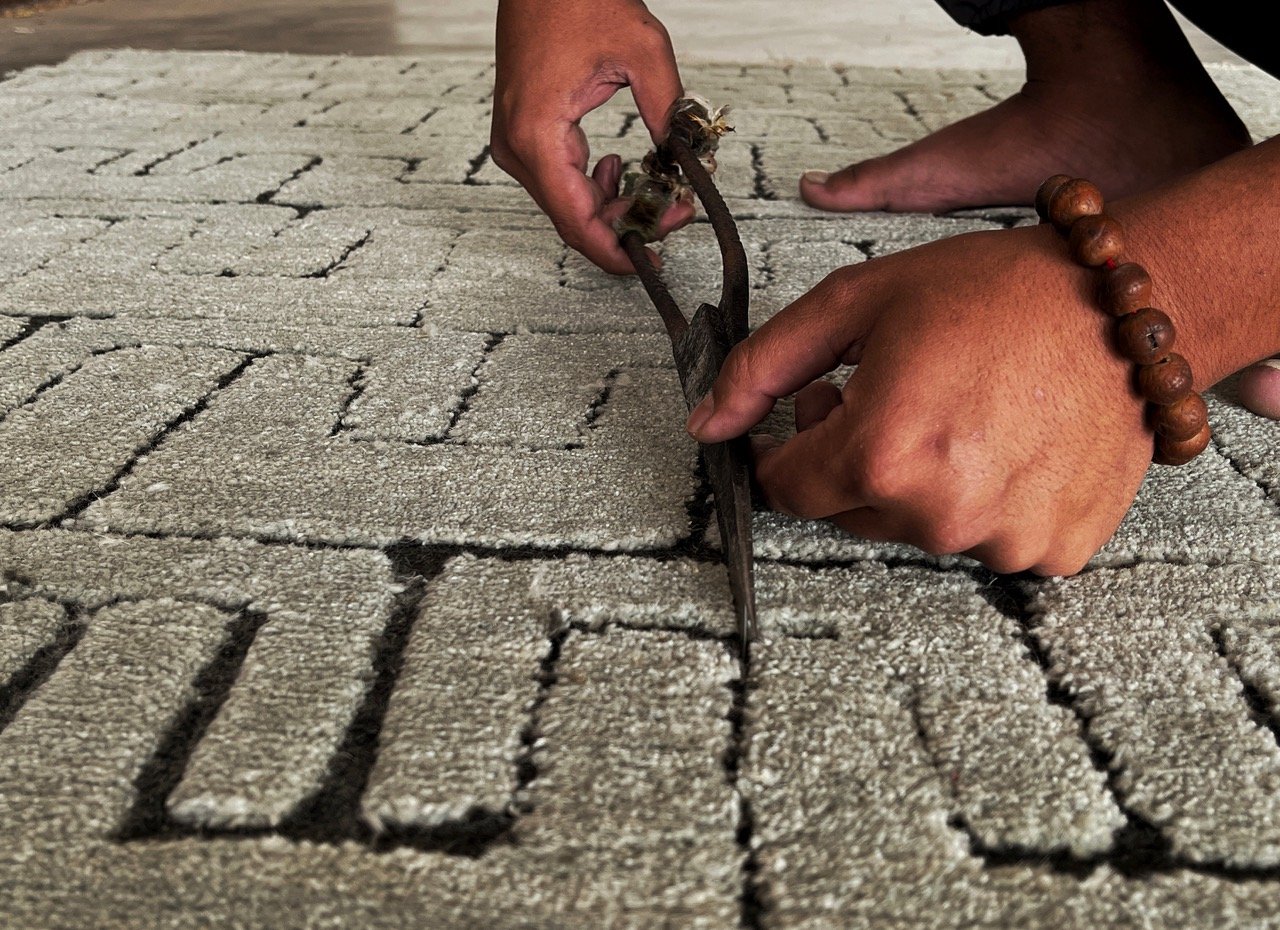
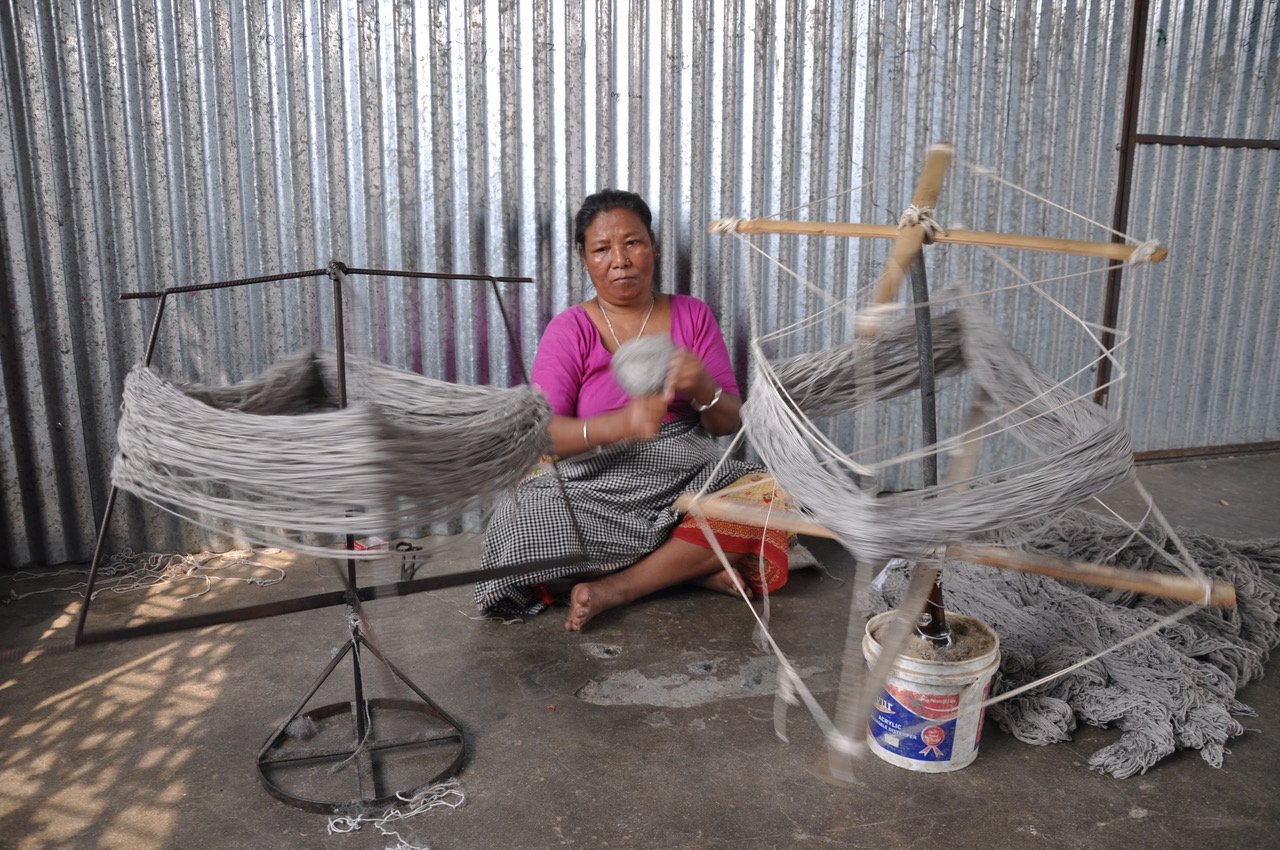
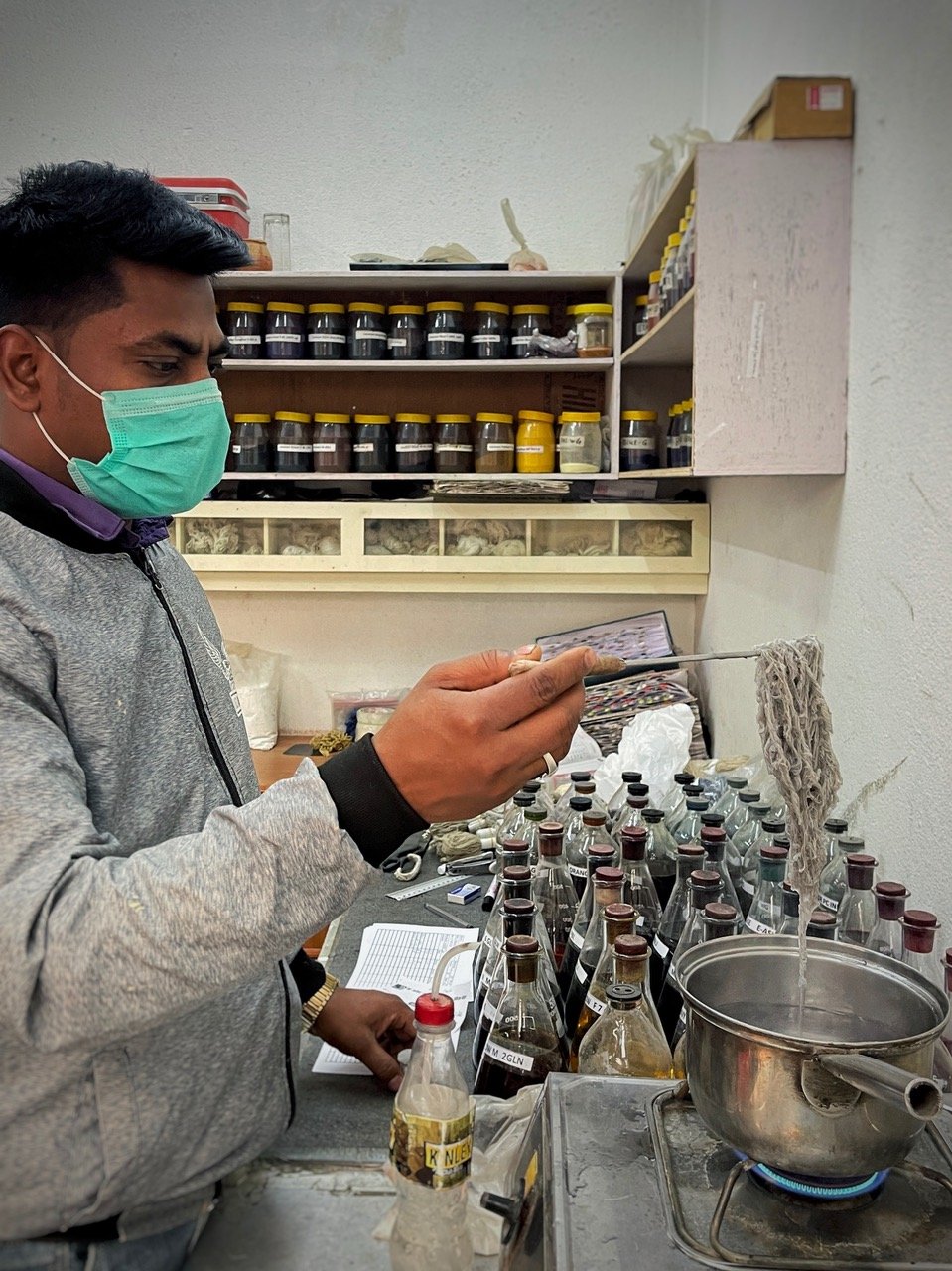
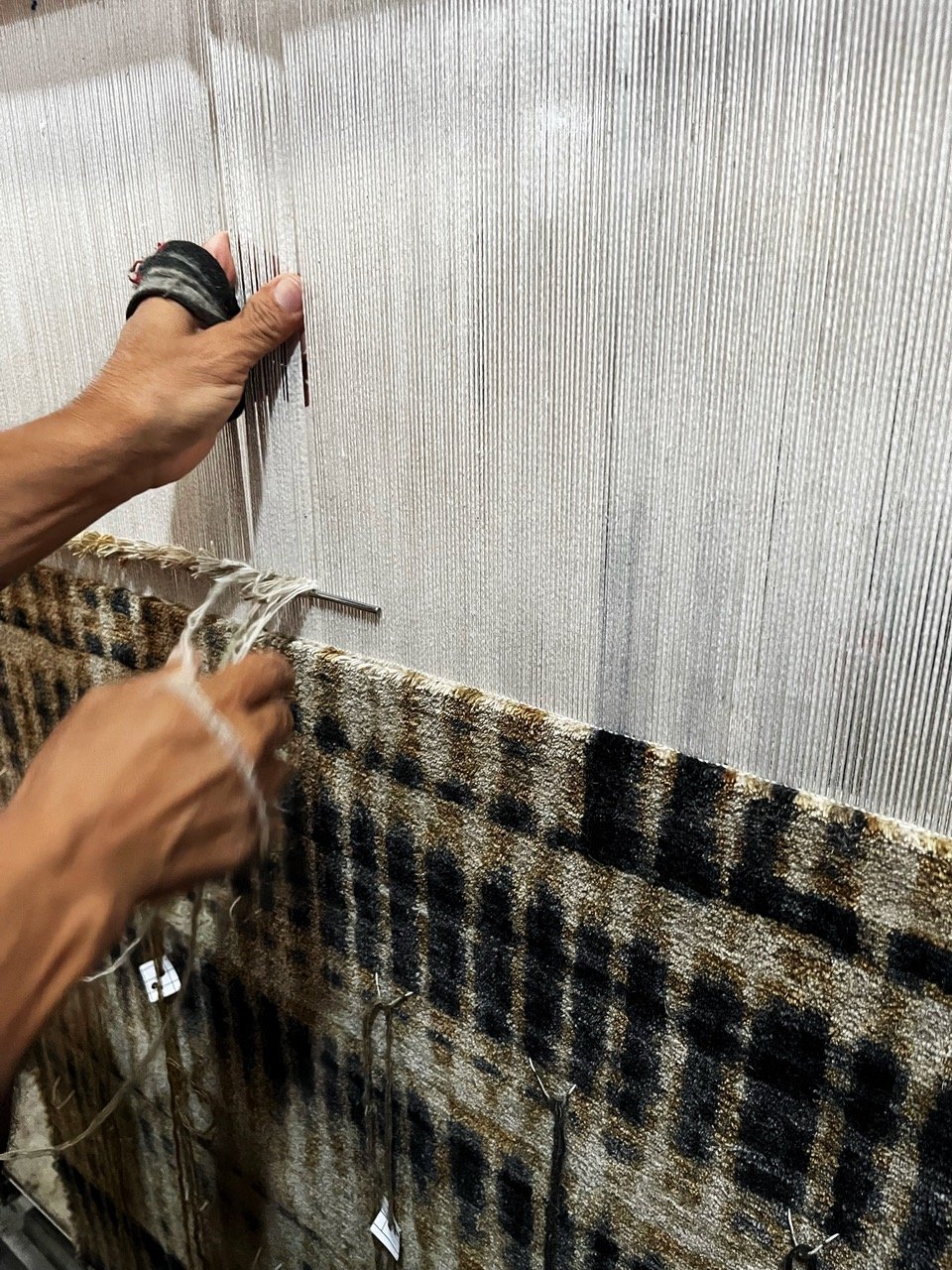
Driscoll Robbins’ production center in Nepal
TSD: Can you walk us through your process for selecting rugs? What makes one rug stand out from another?
DR: Initially, we sourced rugs from U.S. wholesaler shows, but over the years, we’ve shifted to working directly with manufacturers. Buying direct allows us to secure the best quality while offering competitive pricing to our customers. A lot of it comes down to personal taste, as well as seeking variation and unique artistry that stands out.
TSD: What specific qualities do you look for in terms of craftsmanship, design, and artistry that make a rug unique?
DR: We prioritize high-quality materials, particularly the wool and dyes. For example, Nepalese wool, sourced from sheep high in the Himalayas, is rich in lanolin, making it durable, easy to clean, and capable of holding vibrant dyes. The wool is hand-spun and untreated, which enhances its longevity.
TSD: You emphasize the importance of high-quality hand-spun wool and dyes. Why is that so crucial, and how does it affect the overall quality and longevity of a rug?
DR: High-quality wool and dyes make a significant difference. They ensure our clients won’t face issues like stains or wear over time. Experimenting with lower-quality rugs has always led to problems, so we’ve learned to stick with materials that enhance durability and beauty.
TSD: You’ve mentioned being a proud supporter of STEP, a non-profit organization committed to fair trade and the wellbeing of weavers and workers in the handmade carpet industry. Why is this cause so important to you, and how does it influence your work?
DR: STEP is vital to our work and values. We donate $2 for every square foot of rug we buy, ensuring the artisans' quality of life is as good as it can be. Supporting their income and health is the only way this industry can continue to thrive sustainably.
TSD: How do you balance support for the skilled artisans with the business demands of the rug market?
DR: I’ve spent a lot of time at our workshop in Nepal, which is an incredible facility. It provides healthcare, a cafeteria, and housing for the artisans, ensuring they are treated with respect and care. A well-run operation like this supports both ethical practices and the long-term success of our business.
TSD: What role do interior designers play in your business, and how do you collaborate with them in the process of selecting rugs for their clients?
DR: Interior designers are a core part of our business. We go above and beyond to offer concierge service, including meeting with designers individually, offering custom solutions, free delivery and taking as many rugs as needed to clients' homes for viewing.
Many designers reach out online, and we’ve made our full inventory accessible on our website, with photographs of every sample to make it easy for designers to browse. We understand the competitive online market, but we focus on making it as simple as possible for designers to work with us and place orders.
TSD: The rugs in your gallery are incredible works of art with unique stories related to their craftmanship and origin. I would think many customers wouldn’t expect this. How do you help customers understand the long-term value of investing in a quality rug?
DR: We mainly work with designers who already know our value and have long-term relationships with us. For new or retail clients, we walk them through different styles and show them samples to help them identify what appeals to them.
Rugs are like art—they’re a personal investment. We want clients to experience the rugs in their own space, so we offer a week-long rug trial at home, allowing them to see the piece in both daylight and evening light before making a decision. We want our clients to be completely happy with their choice.
Driscoll Robbins rugs in Tammara Stroud Design residences
TSD: Looking ahead, what is your vision for the future of Driscoll Robbins, and how do you hope to continue making your own unique mark on the rug industry?
DR: We’ll continue as long as our customers support us. We’re not interested in expanding with more stores, but we aim to keep offering the best rugs and exceptional service. We’ll keep it fresh, evolving, and offering new products. There aren’t many dealers who do what we do, and that’s something we’re proud of.
Learn more about Driscoll Robbins Fine Carpets.






